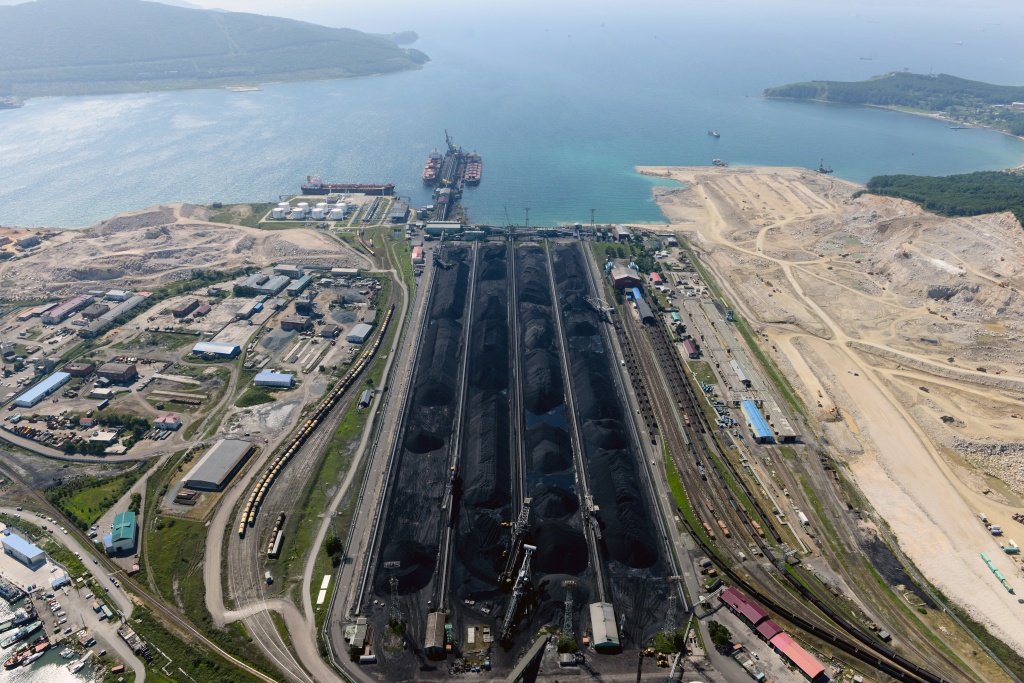Russian mining sector targets Asian customers

Vostochny Coal Terminal
Audio Player
By Eugene Gerden
Russia continues a re-direction of its hydrocarbons and minerals’ exports from Western states to the Asian region, as sanctions’ pressure from West tightens.
As part of these plans, particular hopes are put on coal exports to the region, where the demand for it remains high, especially due to big discounts, provided by Russian suppliers. Russia has already been able to increase its coal deliveries to South Korea, overtaking Australia – the main player in this market in the past.
At present South Korea imports about 2 million tonnes of thermal coal monthly from Russia and there is a possibility that the country’s dependence on Russian coal will only continue to grow.
That will be also due to attractive prices, which are offered by Russian coal producers to their Asian and particular South Korean customers. At the end of December, 6,000 kcal Australian coal cost US$409.5 per tonne, compared to US$244 per tonne for Russian coal.
Russia still remains one of the world’s largest coal producers and exporters with about 442 million tonnes of overall production and 223 million tonnes of annual exports, according to recent data, provided by the Russian Minister of Energy Alexander Novak.
Among the major suppliers of Russian coal to South Korea and other countries of the region are SUEK, Kuzbassrazrezugol, SDS-Ugol and Stroyservis. Still, in contrast to 2022, this year the situation for Russian coal suppliers is more complex. As coal prices in the Asian market fell to their lowest level since April last year, the European market is also seeing negative dynamics, caused by the decline of imports and consumption due to warm weather in Europe.
In the meantime, many Russian mining and metals’ companies are also considering China as one of the potentially biggest sale market for them in the Asian region, although, according to recent report, published by the Russian Aton investment company, there could be serious difficulties for Russian business during their expansion in China, despite the fact that the Chinese market is huge, (accounting for more than 50% of the global consumption of many metals including nickel and copper). China has a powerful domestic production, so imports account for only 25% of its consumption. According to analysts, this, as well as traditionally lower prices offered by Chinese customers for Russian hydrocarbons and metals seriously limits Russian export potential in this region. Instead of supplies to the Chinese market, Russia’s metals and mining companies will most likely have to compete with Chinese manufacturers in other countries and territories of the region among which are Malaysia, Vietnam, Taiwan, the Philippines and Indonesia.
At the same time, another problem which seriously complicates the current switch of the Russian metals’ business to the East is logistics, given that the distance of delivery of goods from Russia to East is three times longer those to West (2,300 km versus 7,900 km). This leads to huge additional costs for Russian business during its exports to the Asia Pacific region.
Anyway, despite the existing problems, the Russian metals and mining business will continue its re-orientation on the Asian region, while, according to some preliminary calculations, Russian ferrous metallurgy enterprises will have to reorient about 4 million tonnes of steel products per year to the eastern direction from traditional for them Western markets.
Therefore, as most leading Russian analysts believe, domestic metals and mining exports to the Asian region will increase annually by 10-20% in the coming years. However, it is unlikely that it will be possible to completely redirect export supplies that previously supplied to Europe to the East, since each Asian country has its own maximum level of consumption and reserves.
Still, despite sanctions the supplies of Russian metals to some Western countries are still ongoing, being mainly accounting for some rare and strategic metals and minerals. For example, JSC MMC Norilsk Nickel, the world’s largest producer of palladium and high-grade nickel, has retained its positions in Western markets in the first seven months of 2022, with 50% of its exports still accounting for Europe and 20% for the US.
